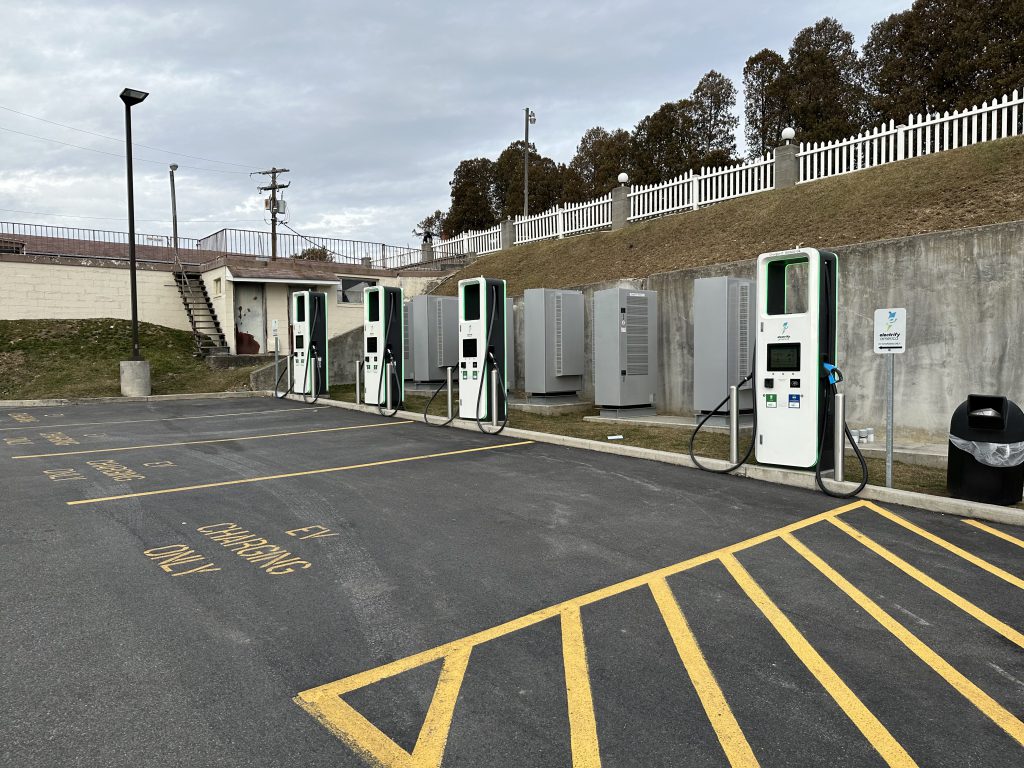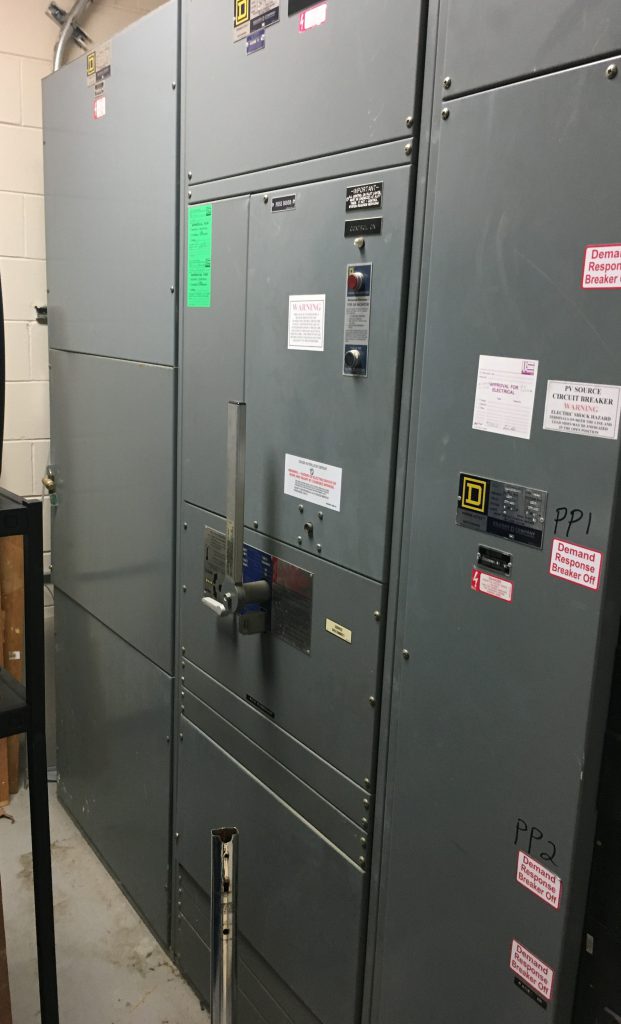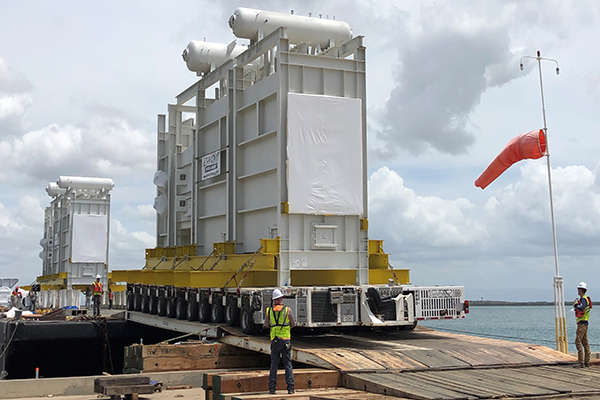By Brad Blickenderfer, P.E.
Implementing charging stations for electric vehicles (EVs) across military installations in preparation for the future electrification of fleet vehicles can bring about broad implications for both physical and electrical infrastructure. It also has the potential to bring significant additional costs beyond just the installation of the charging networks.
To achieve near-term net zero goals and long-term resiliency (along with properly managing additional implementation costs) specific tactics are needed. A good approach to this potentially compounding challenge is to begin with an EV Electrical Master Plan in order to identify both likely and potential issues, and to determine whether a phased approach will work best.
For the general public, switching from a gasoline-powered automotive to an EV may seem like a simple decision. EV prices are coming down, gas prices have been going up, charging stations are being added across the nation, and the process of making the switch can be as simple as visiting a local EV dealership and trading in your old gasoline-powered car. It is not as simple, however, for a military base to make a similar decision and commit to EVs for its fleet.
By 2030, half of all vehicles purchased for government agencies need to achieve zero emissions; beginning in 2035, all new fleet vehicles purchased (EVs, hybrids, or fuel cell) will need to achieve that goal. Committing to EVs and implementing EV charging will impact every federal agency’s electrical infrastructure.
- Buildings will require service upgrades to accommodate the increased loading to charge EVs and hybrids.
- Campus electrical distribution systems will need upgrades to provide adequate service to buildings.
- Determining power supply capability will require coordination with utilities.
- Costs beyond vehicle purchases and the installation of chargers need to be considered.
- Costs will include infrastructure upgrades as well as long-term electrical usage charges.

UNDERSTANDING IMPACTS
Currently engaged in implementing EV charging for more than 20 military installations nationwide, TranSystems has encountered unique sets of challenges, that, while different depending on the location and the mission, could be confronted anywhere.
When it comes to implementing EV charging, a phased approach can help avoid surprises, lay the groundwork for achieving zero emission goals, and help establish a highly resilient electrical infrastructure.
Take for instance, a small installation (hypothetical, for illustrative purposes) of 1,000 personnel; 10 buildings with 100 personnel at each; a 12.47-kV primary electric system that is owned and maintained by the facility; housing for 500 connected to the base’s power system; and 300 fleet vehicles. Assume as well that Level 1 and Level 2 chargers will be installed throughout the base to accomplish required charging tasks. Level 1 chargers are typically “residential” chargers meant for overnight charging. Level 2 chargers can be used in residential or commercial applications and require only five to eight hours to fully charge a vehicle.
From this tightly focused point of view, the overall impact may not seem that dramatic. For instance, to support 50 chargers, 100 poles of electrical space are required. Each charger will require a 60A-2-Pole circuit breaker. At 11.5-kW per unit, the existing building’s power system would see an increase of 575-kW of electrical load, or 1,597-amps on a 3-phase, 208-volt system, or 691-amps on a 3-phase, 480-volt system. Government design guides currently require 15 percent spare capacity for future growth. This would be good for 200-300A.
When this load is applied to all 10 buildings, the implications become much more apparent. Will the utility company be able to service the additional load without extensive upgrades? A typical campus primary system at 12.47-kV is sized and fused at 200-amps. Supporting 10 buildings, each with the added load, would require an additional 5,750-kW, 269-amps at 12.47-kV.
The need for upgrades and the associated costs depend on the layout of the base and the age and use of its facilities. However, in this sample installation, it would be reasonable to see initial costs of upgrading electrical infrastructure approach $500,000 per building.
UPGRADING SYSTEMS
Significant upgrades and increases to capacity may create space requirement issues, especially within older facilities.
It can become unfeasible to provide total redundancy of emergency power. During a power outage, the base would likely need to cease charging operations. Ceasing charging operations may, in turn, create logistical issues for personnel.
Upgrading primary systems requires medium voltage switchgear to be replaced and could also require major trenching. Utility connections would need to be examined. Some utilities may have issues with maintaining the additional load to the site.
Assuming the utility company can provide the needed generating capacity, monthly utility charges would obviously increase. A total of 10 buildings would consume an additional 5,750-kW of electrical load. That factors out to 92,000-kWh/day (5,750,000-W x 16-hrs) / 1000), and 2,760,000-kWh per month. At an average of $0.10/kWh, an additional monthly cost for the base could approach $276,000.

MASTERING THE PLAN
When it comes to implementing EV charging, a phased approach can help avoid surprises, lay the groundwork for achieving zero emission goals, and help establish a highly resilient electrical infrastructure.
It can become unfeasible to provide total redundancy of emergency power. During a power outage, the base would likely need to cease charging operations. Ceasing charging operations may, in turn, create logistical issues for personnel.
- Engage a design firm in completing an EV Electrical Master Plan. Determine your facility’s current electrical capacity, your electrical system condition, utility availability, space restrictions and resiliency issues (such as severe weather and water exposure).
- Use the EV Electrical Master Plan to determine what your facility can support during a preliminary phase. What can be accomplished immediately for EV charging as fleets convert to electric?
- Use your EV Electrical Master Plan to outline long-term goals to achieve the required EV quantities and support.
- Include a thorough resiliency study in the EV Electrical Master Plan, especially if your base is near water or regularly exposed to strong winds. Thinking of everything and protecting expensive new equipment from floods, high winds, and other extreme weather events is crucial to protecting the long-term investment in EVs.
- A phased implementation approach often proves more feasible than trying to accomplish the entire upgrade at once. It also provides users a chance to embrace the new vehicles and day-to-day differences in usage and maintenance, building buy-in over time.
INTEGRATING RENEWABLES
At five of the 20 military bases that TranSystems is supporting with EV charging systems, service leadership has opted for solar arrays and battery storage systems to help them achieve true net zero consumption.
The primary challenge with a solar array tends to be space. Does the facility have the greenspace needed to install solar arrays? If not, you need to get creative. In one location, designed canopies and a trellis network were placed over the parking lot to hold the solar panels. Pulling into the lot can feel like driving into a covered garage, but the system works. A solar array can sometimes generate enough electricity to offset the additional power needed for EV charging and mitigate utility costs.
Likewise, the use of battery storage systems can help mitigate grid demand and peak energy costs. Once the batteries are charged through the solar panels, they can be used to charge electric vehicles. Battery storage also can provide some back-up power during outages, which, in fact, are times when EV charging is most often needed by emergency personnel.
More News from TME
-

A Roadmap for Clean Energy on Kwajalein Atoll
A recent effort led by U.S. Army Space & Missile Defense Command to meet the Army Climate Strategy for operations on Kwajalein Atoll studied potential courses of action that would help the remote installation reach 100 percent carbon-pollution free electricity by 2030. -

Pioneering Sustainability in the Federal Sector
As America undergoes a transformative shift to renewable and sustainable power systems, continuing to meet the energy needs of mission-critical installations requires a comprehensive approach that considers economic and cyber factors along with emerging technologies. -

Achieving Energy Self-Sufficiency at Guantanamo Bay
Naval Station Guantanamo Bay achieved energy self-sufficiency through a record-setting energy savings performance contract that enabled construction of a state-of-the-art combined cycle power plant.